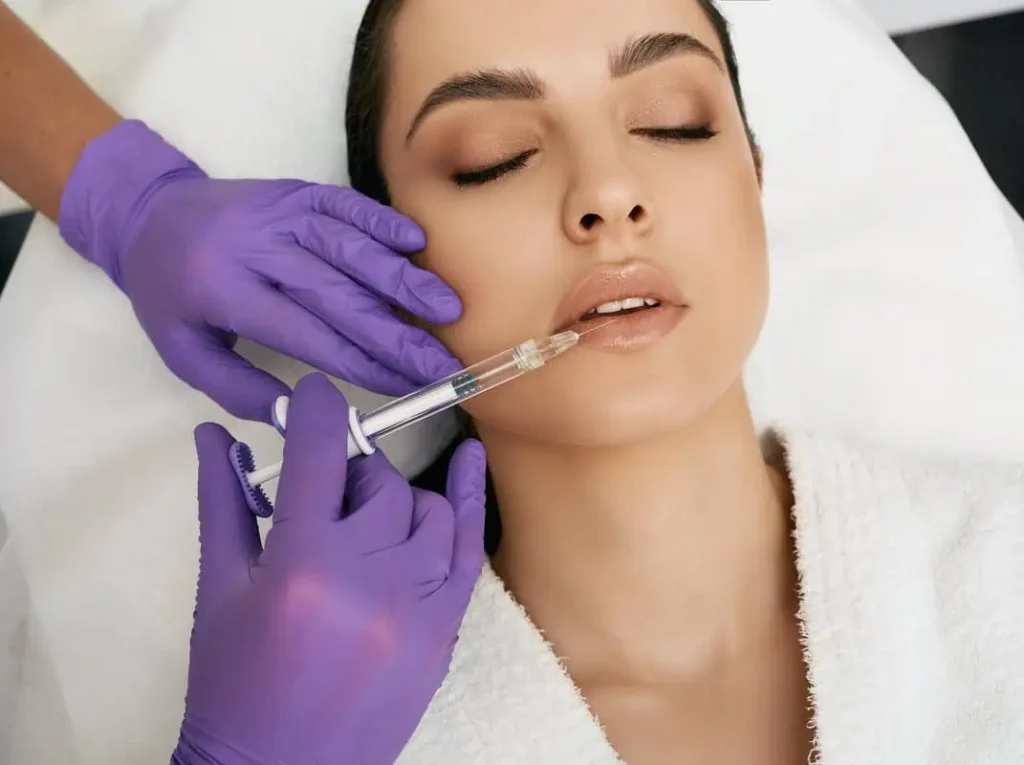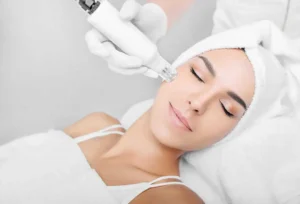
Introduction
Have you ever considered getting fillers to enhance your facial features or combat signs of aging? With the increasing popularity of cosmetic procedures, it is important to understand their safety aspects post, we’ll delve into the safety of fillers for your face, addressing common concerns and shedding light on important considerations. Whether you’re curious about or contemplating the procedure, this comprehensive guide will provide valuable insights.
Understanding Facial Fillers
Facial or dermal fillers are a popular non-surgical cosmetic treatment designed to address various facial concerns and restore a youthful appearance. By injecting these substances beneath the skin’s surface, fillers work to replenish lost volume, soften wrinkles, and enhance facial contours. They offer a versatile solution for individuals seeking a rejuvenating appearance without invasive surgery or extensive recovery time.
The primary component of many facial fillers is hyaluronic acid, a naturally occurring substance found in the body’s connective tissues and skin. Skin hydration and elasticity are maintained by hyaluronic acid, making it an ideal ingredient for filler formulations. This substance attracts and retains moisture, helping to plump and hydrate the skin from within. As a result, hyaluronic acid fillers can effectively reduce fine lines, wrinkles, and areas of volume loss, providing natural-looking results.
Hyaluronic acid fillers are not the only types of fillers available, each with its unique composition and characteristics. Calcium hydroxylapatite fillers, for example, are composed of microscopic particles suspended in a gel-like solution. These fillers stimulate collagen production in the skin, leading to long-lasting improvements in volume and texture. Polylactic acid fillers stimulate the body’s natural collagen production over time, gradually restoring volume and firmness to the treated areas. Polymethylmethacrylate (PMMA) fillers contain tiny, biocompatible beads suspended in a collagen-based gel, enhancing immediate volume while stimulating collagen synthesis for long-term results.
The Safety of Fillers
An experienced and qualified healthcare professional can perform filler treatments safely. There are, however, potential risks and side effects to be aware of. It’s essential to undergo a thorough consultation with a licensed provider who can assess your candidacy for fillers and discuss any pre-existing medical conditions or allergies that may affect the procedure.
Common Concerns and Misconceptions
- Permanent Results: Unlike surgical interventions such as facelifts, most fillers offer temporary results that typically last from six months to two years, depending on the type of filler used. This temporary nature can reassure individuals hesitant about committing to permanent changes in their appearance.
- Allergic Reactions: While allergic reactions to fillers are rare, they can occur. It’s essential to inform your provider of known allergies or sensitivities before treatment. As hyaluronic acid is naturally found in the body, it has a low risk of allergic reactions.
- Overfilling and Unnatural Results: One of the key concerns associated with fillers is the possibility of overfilling or achieving unnatural results. This emphasizes the importance of choosing a skilled injector who knows facial anatomy and can achieve subtle, natural-looking results.
- Bruising and Swelling: Bruising and swelling are common side effects of filler injections, particularly in sensitive areas such as the lips or under the eyes. However, these effects are usually temporary and can be minimized with proper post-treatment care.
Choosing a Qualified Provider
Choosing a qualified and reputable provider who prioritizes patient safety and satisfaction when considering filler treatments is crucial. Here are some tips for finding the right provider:
- Credentials: Choose a provider board-certified in dermatology, plastic surgery, or another relevant field. Additionally, inquire about their training and experience, specifically in filler injections.
- Before-and-After Photos: To assess the provider’s skill and aesthetic style, ask to see before-and-after photos of previous patients. Pay attention to whether the results look natural and harmonious.
- Patient Reviews: Reviews and testimonials from previous patients provide valuable insight into the provider’s bedside manner, expertise, and overall satisfaction with the treatment experience.
- Consultation Process: A thorough consultation ensures the provider understands your goals and expectations. Ask questions about the procedure, possible risks, and expected outcomes during the consultation.
Aftercare and Follow-Up
After undergoing filler injections, following your provider’s instructions for post-treatment care is essential. This may include avoiding strenuous exercise, minimizing sun exposure, and avoiding touching or rubbing the treated area. Also, schedule any recommended appointments to monitor your progress and address concerns.
Conclusion
In conclusion, fillers can be a safe and effective option for enhancing your facial appearance and addressing common signs of aging. However, it’s essential to carefully consider the treatment and choose a qualified provider who prioritizes patient safety and satisfaction. By understanding the risks and benefits of fillers and taking necessary precautions, you can achieve natural-looking results that enhance your confidence and well-being.
Remember, if you’re considering fillers in Reisterstown, MD it’s crucial to consult with a reputable provider such as Quench Infusions & wellness With our expertise and dedication to patient care, you can trust that you’re in good hands throughout your filler treatment journey.







